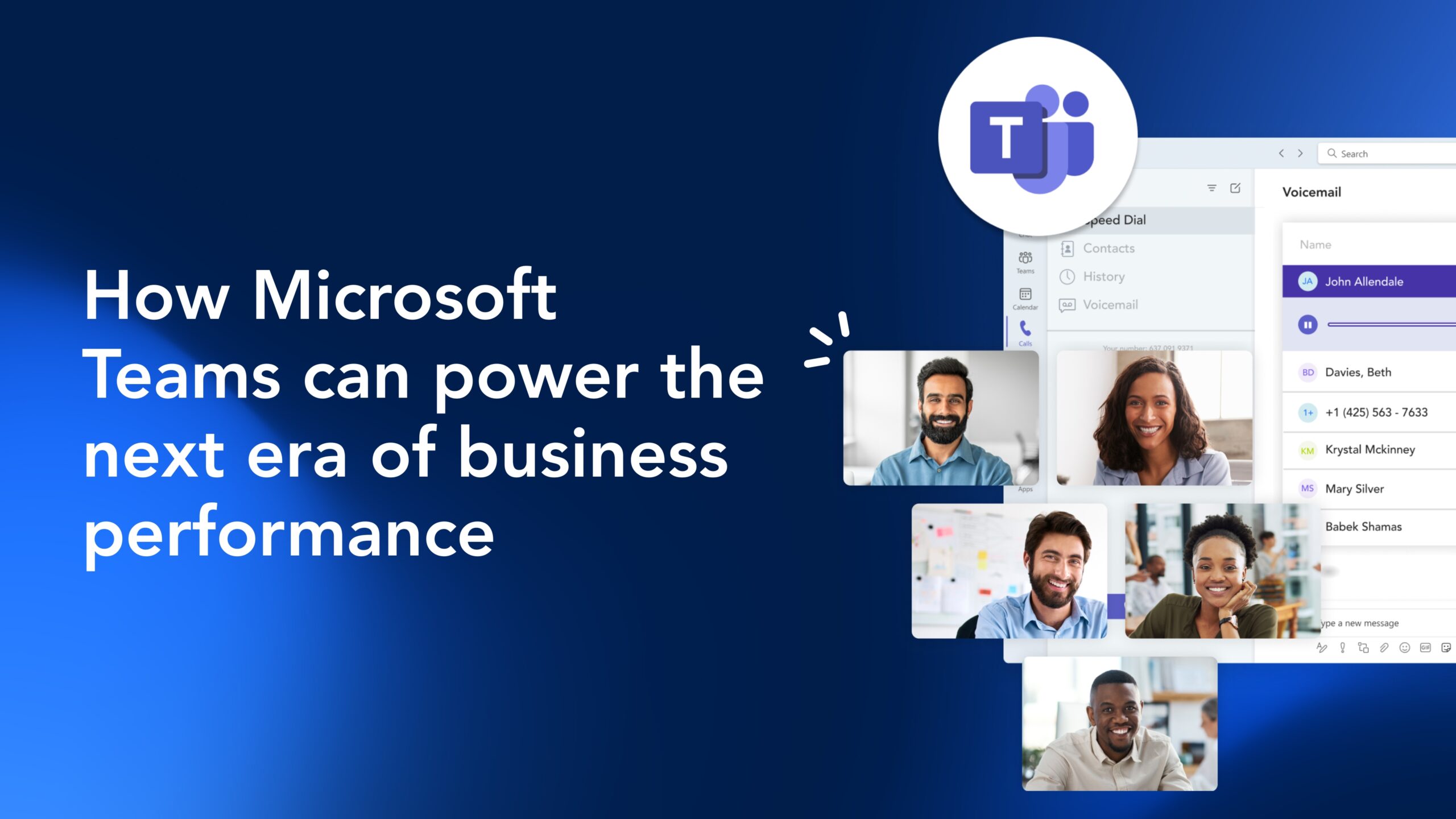Is your business ready for the next era of performance? This question is top of mind for many business leaders.
Microsoft’s 2025 Work Trend Index outlines a clear vision for the future of work: businesses that streamline operations, centralize communication, and embrace AI will lead the next wave of performance. These Frontier Firms are already setting the pace by combining human expertise with intelligent systems, and they’re doing it by building on flexible, connected platforms.
Microsoft Teams is more than a collaboration tool. Today, it’s becoming the operational core for modern organizations.
This article unpacks five key trends reshaping how businesses operate and how Microsoft Teams can evolve from a collaboration tool into a performance platform when paired with the right strategy.
Related Content: How to Supercharge Productivity By Adding AI to Microsoft Teams.
1. The Frontier Firm is real (and gaining ground)
71% of employees at Frontier Firms say their company is thriving, compared to just 37% globally.
Microsoft’s report defines Frontier Firms as companies already using AI, data, and automation to work more intelligently. These organizations aren’t defined by size but by their ability to align teams, tools, and data around a common platform.
What sets them apart isn’t just access to AI or automation, it’s their ability to create structure around those tools. Communication flows are unified, data is accessible, and teams are aligned on how work gets done.
What business leaders can do:
- Identify how many tools employees switch between daily
- Look for opportunities to consolidate workflows
- Prioritize platforms that connect data, people, and operations
Why this matters
Organizations that build a unified foundation now, combining communication, analytics, and service tools, will be positioned to move faster, adapt quicker, and scale smarter. Frontier Firms aren’t defined by size or budget. Instead, they’re defined by how well their systems work together.

2. The productivity crisis Is a visibility problem
53% of leaders say productivity must increase, yet 80% of employees feel they’re already at capacity.
Leaders are pushing for more output. What we know is clear: employees say they’re already maxed out, and this disconnect isn’t about effort, it’s about visibility.
Most organizations lack a clear picture of how work actually happens. Customer conversations are scattered across tools, tasks get tracked inconsistently, and time sinks go unnoticed for too long. Without centralized data, it’s hard to coach teams, automate workflows, or improve performance at scale.
The result? Leaders can’t see what’s slowing things down, and employees can’t focus on what matters most.
What business leaders can do:
- Audit how work is tracked and reported across teams
- Identify blind spots in call, service, or messaging workflows
- Ensure customer and employee interactions are measurable
Why this matters
Organizations that prioritize visibility can better identify what’s working, what isn’t, and what’s slowing progress. With centralized data and measurable workflows, leaders gain the insight needed to coach more effectively, scale operations, and unlock capacity across teams.
3. Every conversation is a missed opportunity without data
68% of employees at Frontier Firms use AI to structure internal communication workflows, compared to just 46% globally.
Every call, message, or meeting holds value, but in most organizations, those interactions disappear the moment they end. Critical customer feedback never makes it to product teams, coaching moments for sales or support go unnoticed, and leaders are left guessing about what’s actually being said on the front lines.
Frontier Firms take a different approach. They treat every conversation as a data point. By structuring and capturing communication across channels, they turn scattered interactions into insights and insights into action.
What business leaders can do:
- Determine whether customer conversations are being captured and analyzed
- Review how voice and chat interactions are tracked and reported
- Ensure leadership teams can access communication data for planning
Why this matters
When conversations are structured and searchable, they become a strategic asset. Organizations can identify trends, improve service, coach in real time, and make faster decisions, all based on real-world interactions happening every day.
Related Content: Why Real-Time Call Analytics Is the Missing Link in Your Microsoft Teams Strategy
4. AI can’t deliver results without the right foundation
82% of leaders say this is a pivotal year to rethink strategy and operations, yet only 24% have deployed AI organization-wide.
AI is no longer a theoretical concept. It’s already being deployed to enhance productivity, streamline operations, and improve service. But most organizations struggle to move beyond basic use cases because they don’t have the infrastructure to support it.
Microsoft’s report outlines three phases of AI adoption: starting with individual assistance, then AI working alongside teams, and eventually, AI agents operating processes under human direction. Progress through these stages depends entirely on the quality of your systems and data.
What’s clear: the organizations seeing value today treat AI not as a tool, but as a layer across everything: communication, service, operations, decision-making.
What business leaders can do:
- Evaluate whether communication and service data are centralized and accessible
- Identify repetitive workflows that could be candidates for AI automation
- Prioritize foundational improvements over experimental AI tools
Why this matters
Organizations that build connected systems and structured workflows lay the groundwork for scalable automation. With the right foundation, AI doesn’t just assist employees, it also extends their impact, streamlines execution, and accelerates transformation across the business.
Related Content: Microsoft Teams: Your Platform to Start Capturing Data and Building AI Readiness
5. The tools you need are already in place
46% of organizations already use agents to automate full workflows, but many still lack the systems to scale impact.
Most companies don’t need more tools. Rather, they need more from the tools they already have.
Platforms like Microsoft Teams are widely adopted, but in many organizations, they’re still used primarily for messaging and meetings. The opportunity now is to activate these platforms as the backbone for communication, service, automation, and insight without adding more complexity to the tech stack.
Leaders often chase new apps to solve operational gaps, but the real unlock comes from consolidating work into a system that’s already embedded in day-to-day routines. With the right integrations and data flows, Teams can shift from a collaboration hub to a command center, enabling faster decisions, better visibility, and AI readiness by default.
What business leaders can do:
- Rethink Teams as a business platform, not just a meeting tool
- Focus on activation and integration instead of adding apps
- Align communication, data, and service around a shared system
Why this matters
Companies that fully activate existing platforms like Teams can streamline operations, improve customer and employee experiences, and unlock AI capabilities, all without overhauling their stack. The infrastructure is already in place. Now it’s about turning it on.
Related Content: Exploring the Benefits of Microsoft Teams: Key Features and Collaboration Advantages
Is your business ready for what’s next?
Before chasing the next tool or trend, ask yourself:
- Are we capturing and learning from customer and employee interactions?
- Do we have visibility into how work gets done across departments?
- Are our platforms connected, or are we switching between disconnected tools?
- Could we introduce automation or AI with confidence today?
If the answer to any of these is “no,” the next step may not be new technology, but a better way to leverage what’s already in place.
Microsoft Teams has the potential to become more than a collaboration tool. With the right structure and integrations, it becomes a high-performance platform, powering service, insight, and innovation across the business.
Explore the full 2025 Microsoft Work Trend Index to understand how the future of work is changing.
Ready to take the next step? Learn more about how you can unlock the full potential of Microsoft Teams with Momentum.



